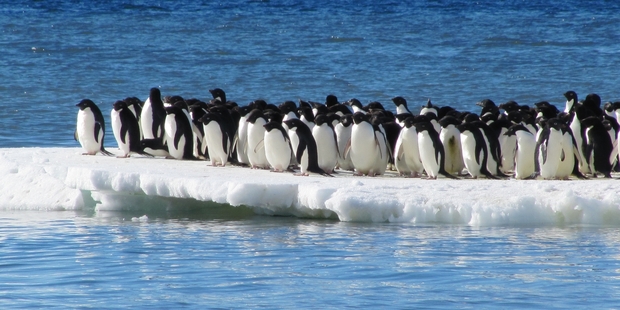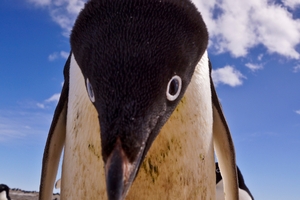By Matthew Backhouse
Saturday Mar 22, 2014

The latest results, published this month in the US science journal PLOS ONE, show the population on Ross Island has steadily increased by about 6 per cent a year since 2001. The researchers concluded the mean population between 1981 to 2012 was 855,625 breeding pairs. The current estimate of one million breeding pairs is up 16.9 per cent on the 30-year average.
By contrast, Adelie populations have been in decline on the West Antarctic Peninsula because of warming, a loss of sea ice and a drop in the abundance of their primary prey, Antarctic krill. Landcare Research scientist Dr Phil Lyver, who collaborated on the research with Antarctica New Zealand and others, said the growth of Ross Sea colonies in the past decade was the highest it had ever been.

Dr Lyver said one possibility was the increase, in both extent and duration, of sea ice in the Ross Sea area. The growth was in contrast to other parts of Antarctica, where sea ice was decreasing. "Adelie penguins, which we're looking at, rely a lot on sea ice in terms of providing a platform for security, in terms of getting out of the water, but also for krill - it's a krill nursery. So it could be that the food availability is getting greater."
Another theory was that fishing of the toothfish - the top predator in the system - was removing pressure on the Antarctic silverfish, which penguins also ate. The researchers concluded that Ross Sea colonies of Adelie penguin could be the last to benefit from the presence of sea ice, if current climate trends continued. Previous research has predicted 75 per cent of Adelie penguin colonies above the 70th parallel south would decrease or disappear by 2050. However, the Ross Sea colonies were below that parallel.
Results from the latest aerial survey, carried out over the past summer, are not expected for another two months. However, Dr Lyver estimated there could now be more than a million breeding pairs in the western Ross Sea - the highest level in 30 years. This summer's aerial survey was the first time the entire Ross Sea census was conducted by helicopter.
source


















No comments:
Post a Comment